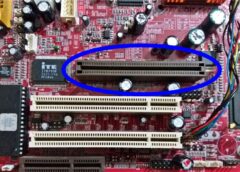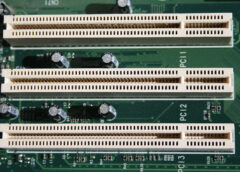
FIOS (FREE IN, OUT, STOWED) :
It is most important to remember that the “Free” reference is viewed from the Ship Owners point of view – not the Shipper’s. Some Shippers get caught out when they read the word “Free” as they incorrectly believe that it refers to them.
Freight rates quoted on a FIOS basis specifically exclude all aspects relating to cargo handling operations. The ship is only responsible for expenses arising as a result of the ship calling into the port, i.e. tugs, pilots and light dues etc. Another very important consideration when booking cargo on FIOS terms is that the ship does not bear any responsibility for the speed of loading or discharging.
Usually the rate agreed includes a fixed “free” period of time for loading/discharging operations, after which time a daily demurrage is incurred. Obviously this is of paramount importance where port congestion or stevedoring performance is uncertain. There are many overseas ports which fall into this category and particularly where vessel demurrage rates can vary significantly, depending on the size and type of ship nominated to undertake the particular project.
LINER TERMS – GENERAL STATEMENT :
Liner Terms is a very ambiguous statement and can be interpreted in a variety of ways in different ports of the world and by different Ship Owners/Agents. Personally we would prefer to clearly define the extent of responsibility when quoting on this basis.
LINER TERMS HOOK / HOOK :
Given that this is a notional point in chartering terms, this is best described as the Shipper/Receiver arranging for delivery/receival of cargo to/from directly under ships hook and the ship paying for the labour to stow the cargo in the vessels cargo holds, as well as on-board lashing & securing and provision of dunnage materials, and to discharge again over the ship’s side. Shore based stevedoring aspects remain the responsibility of the shipper/receiver, however, there are some Owners that may incorporate these costs into their LTHH rate. Once again, ask Owners to clearly define this aspect.
Wharfage charges/dues/taxes can be a contentious issue but are usually considered to be for the Shippers/Receivers account and there may also be many other statutory levies on cargo or freight that may apply. Many Shippers/Receivers are unaware of these additional costs and do not include them into their costing and consequently may be left with an unexpected considerable expense at the completion of a project.
FULL LINER TERMS :
This is somewhat a vaguer term given different port practices. However, it generally implies that the freight amount provided includes both shore based and on-board stevedoring, lashing/unlashing, dunnage materials, securing/unsecuring and all costs of presenting to/receiving the cargo from the ship’s side; with the shippers/receivers just bearing the cost of discharging from/reloading to the transport, along with the usual port charges/levies/taxes etc.
Frequently the terms are varied at different ends of the voyage i.e. FILO (Free In/Liner Out), LIFO (Liner In Free Out) or FIFO (Free In/Free Out) etc. To be absolutely sure of all liabilities, it is always advisable to request that terms clearly and concisely indicate what is/isn’t included in your particular contract – in layman’s terms.
|
ABBREVIATION |
MEANING |
|
|
A |
AA |
Always Afloat |
|
AAAA |
Always Accessible Always Afloat |
|
|
AAOSA |
Always Afloat or Safe Aground. Condition for a vessel whilst in port |
|
|
AARA |
Amsterdam-Antwerp-Rotterdam Area |
|
|
ABAFT |
Toward the rear (stern) of the ship. Behind. |
|
|
ABOARD |
On or within the ship |
|
|
ABOVE DECK |
On the deck (not over it – see ALOFT) |
|
|
ABT |
About |
|
|
ADCOM |
Address Commission |
|
|
ADDENDUM |
Additional chartering terms at the end of a charter party |
|
|
AFSPS |
Arrival First Sea Pilot Station (Norway) |
|
|
AFFREIGHTMENT |
The hiring of a ship in whole or part |
|
|
AFT |
At or towards the stern or rear of a ship |
|
|
AGROUND |
Touching or fast to the bottom |
|
|
AGW |
All Going Well |
|
|
AHL |
Australian Hold Ladders |
|
|
AIDS TO NAVIGATION |
Artificial objects to supplement natural landmarks indicating safe and unsafe waters |
|
|
ALOFT |
Above the deck of the ship |
|
|
AMIDSHIPS |
In or toward the centre of the ship |
|
|
ANCHORAGE |
A place suitable for anchorage in relation to the wind, seas and bottom |
|
|
ANTHAM |
Antwerp-Hamburg Range |
|
|
APS |
Arrival Pilot Station |
|
|
ARAG > |
Amsterdam-Rotterdam–Antwerp-Gent Range > |
|
|
ARBITRATION |
Method of settling disputes which is usually binding on parties. A clause usually in a charter party |
|
|
A/S |
Alongside |
|
|
ASBA |
American Shipbrokers Association |
|
|
ASPW |
Any Safe Port in the World |
|
|
ASTERN |
In the back of the ship, opposite of ahead |
|
|
ATDNSHINC |
Any Time Day/Night Sundays and Holidays Included |
|
|
ATHWARTSHIPS |
At right angles to the centreline of the ship |
|
|
ATUTC |
Actual Times Used to Count |
|
|
B |
BACKLETTER |
Where a seller/shipper issues a ‘letter of indemnity’ in favour of the carrier in exchange for a clean bill of lading |
|
BAF |
Bunker Adjustment Factor. A Fuel Surcharge expressed as a percentage added or subtracted from the freight amount, reflecting the movement in the market place price for bunkers. |
|
|
BALE CAP. |
Cubic capacity of a vessels holds to carry packaged dry cargo such as bales/pallets |
|
|
BALLAST |
Heavy weight, often sea water, necessary for the stability and safety of a ship which is not carrying cargo |
|
|
BALLAST BONUS |
Compensation for relatively long ballast voyage |
|
|
BAREBOAT CHTR. |
Bareboat Charter – Owners lease a specific ship and control its technical management and commercial operations only. Charterers take over all responsibility for the operation of the vessel and expenses for the duration. |
|
|
BBB |
Before Breaking Bulk. Refers to freight payments that must be received before discharge of a vessel commences |
|
|
BDI |
Both Dates Inclusive |
|
|
BEAM |
The maximum breadth or the greatest width of a ship |
|
|
BELOW |
Beneath the deck |
|
|
BENDS |
Both Ends (Load & Discharge Ports) |
|
|
BI |
Both Inclusive |
|
|
BIMCO |
The Baltic and International Maritime Council |
|
|
BL 1 |
Bale |
|
|
BL 2 |
(Bill of Lading) A document signed by the carrier which acts as a Contract of Affreightment, a receipt and evidence of title to the cargo. |
|
|
BM |
Beam |
|
|
BN |
Booking Note |
|
|
BOB |
Bunker on Board |
|
|
BOFFER |
Best Offer |
|
|
BOW |
The forward part of a ship |
|
|
BROB |
Bunkers Remaining on Board |
|
|
BROKERAGE |
Percentage of freight payable to broker (by owners in c/p’s) or applicable to sale or purchase |
|
|
BSS |
Basis |
|
|
BSS 1/1 |
Basis 1 Port to 1 Port |
|
|
BT |
Berth Terms |
|
|
BULKHEAD |
A vertical partition separating compartments |
|
|
BUNDLING |
This is the assembly of pieces of cargo, secured into one manageable unit. This is relevant to items such as Structural Steel, Handrails, Stairways etc. Whilst this is a very flexible description, a rule of thumb is to present cargo at a size easily handled by a large (20 tonne) fork lift. |
|
|
BUNKERS |
Name given for vessels Fuel and Diesel Oil supplies (Originates from coal bunkers) |
|
|
BUOY |
An anchored float used for marking a position on the water or a hazard or a shoal and for mooring |
|
|
BWAD |
Brackish Water Arrival Draft |
|
|
C |
CAF |
Currency Adjustment Factor |
|
CBM |
Cubic Metres |
|
|
CBFT (or CFT) |
Cubic Feet |
|
|
CFR (or C&F) |
Cost and Freight (name port of destination). The seller must pay the costs of freight necessary to bring the goods to the name port of destination. |
|
|
CHART |
A map used by navigators |
|
|
CHOPT |
Charterers Option |
|
|
CHTRS |
Charterers |
|
|
CIF |
Cost, Insurance and Freight (name port of destination). The sellers must pay the cots of freight necessary to bring the goods to the named port of destination as in CFR and also must arrange marine insurance for the goods. |
|
|
CKD |
Completely knocked down |
|
|
COA |
Contract of Affreightment – Owners agree to accept a cost per revenue tonne for cargo carried on a specific number of voyages. |
|
|
CIP |
Carriage & Insurance Paid To (name place of destination). The seller has the same obligations as under CPT, but is also responsible for obtaining cargo insurance. |
|
|
COACP |
Contract of Affreightment Charter Party |
|
|
COB |
Closing of Business |
|
|
COBLDN |
Closing of Business London |
|
|
COD |
Cash On Delivery |
|
|
COGSA |
Carriage of Goods by Sea Act |
|
|
CONGESTION |
Port/berth delays |
|
|
CONS |
Consumption |
|
|
C/SNEE |
CONSIGNEE. Name of agent, company or person receiving consignment |
|
|
COP |
Custom Of Port |
|
|
CP (or C/P) |
Charter Party |
|
|
CPD |
Charterers Pay Dues |
|
|
CPT |
Carriage Paid To (name place of destination). The seller must pay for any freight costs involved in getting the goods to the name destination. (but does not have to obtain insurance for the goods). The seller fulfils its obligation to deliver when it hands the goods over to the carrier and not when the goods reach the place of destination. |
|
|
CQD |
Customary Quick Despatch |
|
|
CR |
Current Rate |
|
|
CROB |
Cargo Remaining on Board |
|
|
CRN |
Crane |
|
|
CRT |
Cargo Retention Clauses, introduced by charterers based on shortage of delivered cargo because of increased oil prices |
|
|
CST |
Centistoke |
|
|
CTR |
Container Fitted |
|
|
D |
DA |
Disbursement Account |
|
DAF |
Deliver At Frontier |
|
|
DAPS |
Delivered at Place (name place of destination). |
|
|
DAMFORDET |
Damages for Detention. Penalty if cargo is not ready when ship arrives for working (1st day of Laycan). This is not detention which is charged for ships time on delay. If the cargo is ready there is no DAMFORDET. |
|
|
DAT |
Delivered at Terminal (insert named terminal) The seller is responsible for delivering the goods to the nominated terminal. |
|
|
DDU |
Delivered Duty unpaid. |
|
|
DDP |
Delivered Duty Paid (name place of destination). |
|
|
DECK |
A permanent covering over a compartment, hull or any part thereof |
|
|
DEM |
Demurrage (Quay Rent). Money paid by the shipper for the occupying port space beyond a specified “Free Time” period. |
|
|
DEQ |
Delivered Ex Quay |
|
|
DES |
Delivered Ex Ship |
|
|
DESP |
Despatch. Time saved, reward for quick turnaround- in dry cargo only |
|
|
DET |
Detention (See DAMFORDET) |
|
|
DEV |
Deviation. Vessel departure from specified voyage course |
|
|
DFRT |
Deadfreight. Space booked by shipper or charterer on a vessel but not used |
|
|
DHDATSBE |
Despatch Half Demurrage on All Time Saved Both Ends |
|
|
DHDWTSBE |
Despatch Half Demurrage on Working Time Saved Both Ends |
|
|
DISCH > |
Discharge |
|
|
DK |
Deck |
|
|
DLOSP |
Dropping Last Outwards Sea Pilot (Norway) |
|
|
DO |
Diesel Oil |
|
|
DOLSP |
Dropping Off Last Sea Pilot (Norway) |
|
|
DOP |
Dropping Outward Pilot |
|
|
DOT |
Department of Transport |
|
|
DNRCAOSLONL |
Discountless and Non-Returnable Cargo and/or Ship Lost or Not Lost |
|
|
DRAUGHT (or DRAFT) |
Depth to which a ship is immersed in water. The depth varies according to the design of the ship and will be greater or lesser depending not only on the weight of the ship and everything on board, but also on the density of the water in which the ship is lying. |
|
|
DRK > |
Derrick |
|
|
DUNNAGE > |
Materials of various types, often timber or matting, placed among the cargo for separation, and hence protection from damage, for ventilation and, in the case of certain cargoes, to provide space in which the tynes of a fork lift truck may be inserted. |
|
|
DWAT (or DWT) |
Deadweight. Weight of cargo, stores and water, i.e. the difference between lightship and loaded displacement. |
|
|
E |
EBB |
A receeding current |
|
EC |
East Coast |
|
|
EIU |
Even If Used |
|
|
ELVENT lang=FR> |
Electric Ventilation |
|
|
ETA |
Estimated Time of Arrival |
|
|
ETC |
Estimated Time of Completion |
|
|
ETD |
Estimated Time of Departure |
|
|
ETS |
Estimated Time of Sailing |
|
|
EXW |
Ex Works (name works). The seller delivers when it places the goods at the disposal of the buyer at the seller’s premises. EXW represents the minimum obligation for the seller. |
|
|
F |
FAC |
Fast as can |
|
FAS |
Free Alongside Ship (name port of shipment). It is the seller’s responsibility to ensure goods have been placed alongside the vessel at the wharf. |
|
|
FCA |
Free Carrier (insert named place of delivery) |
|
|
The seller delivers the goods to the nominated carrier. FCA requires the seller to clear the goods for export. |
||
|
FD (FDIS) |
Free Discharge |
|
|
FDD |
Freight Demurrage Deadfreight |
|
|
FDESP |
Free Despatch |
|
|
FDEDANRSAOCLONL |
Freight Deemed Earned, Discountless And Non-Returnable (Refundable) Ship And Or Cargo Lost Or Not Lost |
|
|
FENDER |
A cushion, placed between ships, or between a ship and a pier, to prevent damage |
|
|
FEU |
Standard 40′ Container |
|
|
FHEX |
Fridays/Holidays Excluded |
|
|
FHINC |
Fridays/Holidays Included |
|
|
FILO |
Free In/Liner Out. Seafreight with which the shipper pays load costs and the carrier pays for discharge costs. |
|
|
FIO |
Free In/Out. Freight booked FIO includes the seafreight, but no loading/discharging costs, i.e. the charterer pays for cost of loading/discharging cargo. |
|
|
FIOS |
Free In/Out Stowed. As per FIO, but excludes stowage costs. |
|
|
FIOST |
Free In/Out and Trimmed. Charterer pays for cost of loading/discharging cargo, including stowage and trimming. |
|
|
FIOT |
Free In/Out and Trimmed. As per FIOS but includes trimming, e.g. the levelling of bulk cargoes. FIOS includes seafreight, but excludes loading/discharging and stowage costs. |
|
|
FIT |
Free In Trimmed |
|
|
FIW |
Free In Wagon |
|
|
FIXING |
Chartering a Vessel |
|
|
FIXTURE |
Conclusion of shipbrokers negotiations to charter a ship – an agreement |
|
|
FLATPACKING |
Cargo to be presented stacked and secured as an integral unit. |
|
|
FLT |
Full Liner Terms |
|
|
FMC |
Federal Maritime Commission |
|
|
FME |
Force Majeure Excepted |
|
|
FMS |
Fathoms |
|
|
FO 1 |
For Orders |
|
|
FO 2 (IFO) |
Fuel Oil/Intermediate FO |
|
|
FO 3 |
Free Out |
|
|
FOB |
Free on Board (name port of shipment). The seller delivers the goods on board the vessel nominated by the buyer at the named port of shipment. FOB requires the seller to clear the goods for export. |
|
|
FOFFER |
Firm Offer |
|
|
FOG |
For Our Guidance |
|
|
FOQ |
Free On Quay |
|
|
FOR |
Free On Rail |
|
|
FORCE MAJEURE |
Clause limiting responsibilities of the charterers, shippers and receivers of cargo. |
|
|
FORE-AND-AFT |
In a line parallel to the keel |
|
|
FORWARD |
Toward the bow of the ship |
|
|
FOT |
Free On Truck |
|
|
FOW 1 |
First Open Water |
|
|
FOW 2 |
Free On Wharf |
|
|
FP |
Free Pratique. Clearance by the Health Authorities |
|
|
FR |
First Refusal. First attempt at best offer that can be matched |
|
|
FREEBOARD |
The minimum vertical distance from the surface of the water to the gunwale |
|
|
FRT |
Freight. Money payable on delivery of cargo in a mercantile condition |
|
|
FREE DESPATCH |
If loading/discharging achieved sooner than agreed, there will be no freight money returned. |
|
|
FREE EXINS |
Free of any Extra Insurance (Owners) |
|
|
FREE OUT |
Free of discharge costs to owners. Includes seafreight only. |
|
|
FRUSTRATION |
Charterers when cancelling agreement sometimes quote ‘doctrine of frustration’ i.e. vessel is lost, extensive delays. |
|
|
FWAD |
Fresh Water Arrival Draft |
|
|
FWDD |
Fresh Water Departure Draft |
|
|
FYG |
For Your Guidance |
|
|
FYI |
For Your Information |
|
|
G |
GA |
General Average |
|
GEAR |
A general term for ropes, blocks, tackle and other equipment |
|
|
GLS (GLESS) |
Gearless |
|
|
GNCN |
Gencon (GENERAL CONDITIONS) |
|
|
GN (or GR) |
Grain (Capacity) |
|
|
GO |
Gas Oil |
|
|
GP |
Grain Capacity. Cubic capacity in ‘grain’ |
|
|
GR |
Geographical Rotation. Ports in order of calling |
|
|
GRD |
Geared |
|
|
GRT |
Gross Registered Tonnage |
|
|
GSB |
Good, Safe Berth |
|
|
GSP |
Good, Safe Port |
|
|
GTEE |
Guarantee |
|
|
GUNWALE |
The upper edge of a ship’s sides |
|
|
2H |
Second Half |
|
|
H |
HA |
Hatch |
|
HAGUE RULES |
Code of minimum conditions for the carriage of cargo under a Bill of Lading |
|
|
HATCH |
An opening in a ship’s deck fitted with a watertight cover |
|
|
HBF |
Harmless Bulk Fertilizer |
|
|
HDLTSBENDS |
Half Despatch Lay Time Saved Both Ends |
|
|
HDWTS |
Half Despatch Working (or Weather) Time Saved |
|
|
HHDW |
Handy Heavy d.w. (Scrap) |
|
|
HIRE |
T/C Remuneration |
|
|
HMS |
Heavy Metal Scraps |
|
|
HO |
Hold |
|
|
HOLD |
A compartment below deck in a large vessel, used solely for carrying cargo |
|
|
HULL |
The main body of a ship |
|
|
HW |
High Water |
|
|
I |
ICW |
Intercoastal Waterway : bays, rivers, and canals along the coasts (such as the Atlantic and Gulf of Mexico coasts), connected so that vessels may travel without going into the sea |
|
IMDG |
International Maritime Dangerous Goods Code |
|
|
IMO |
International Maritime Organisation |
|
|
IN &/OR OVER |
Goods carried below and/or on deck |
|
|
IND |
Indication |
|
|
INTERMODAL |
Carriage of a commodity by different modes of transport, i.e. sea, road, rail and air within a single journey |
|
|
INCOTERMS |
Three letter codes (acronyms) established by the International Chamber of Commerce to provide guidelines to the responsibilities of the buyer and seller for the most commonly used terms in foreign trade. |
|
|
ITF |
International Transport Workers Federation (Trade Unions). Complies on crewing |
|
|
ITINERARY |
Route.Schedule |
|
|
IU |
If Used |
|
|
IUHTAUTC |
If Used, Half Time Actually To Count |
|
|
IWL |
Institute Warranty Limits |
|
|
K |
KEEL |
The centreline of a ship running fore and aft; the backbone of a vessel |
|
KNOT |
A measurement of speed equal to one nautical mile (6,076 feet) per hour |
|
|
L |
LANE METER |
A method of measuring the space capacity of Ro/Ro ships whereby each unit of space (Linear Meter) is represented by an area of deck 1.0 meter in length x 2.0 meters in width. |
|
LASH |
To hold goods in position by use of Ropes, Wires, Chains or Straps etc. |
|
|
LAT |
Latitude. The distance north or south of the equator measured and expressed in degrees. |
|
|
LAYCAN |
Laycan (Layday Cancelling Date) |
|
|
LAYTIME |
Time at Charterers disposal for purpose of loading/discharging |
|
|
L/C |
Letter of Credit |
|
|
LCR |
Lowest Current Rate |
|
|
LEE |
The side sheltered from the wind |
|
|
LEEWARD |
The direction away from the wind. Opposite of windward |
|
|
LEEWAY |
The sideways movement of the ship caused by either wind or current |
|
|
LF |
Load Factor. Percentage of cargo or passengers carries e.g. 4,000 tons carried on a vessel of 10,000 capacity has a load factor of 40% |
|
|
LIEN |
Retention of property until outstanding debt is paid |
|
|
LNG |
Liquefied Natural Gas |
|
|
LOA |
Length Overall of the vessel |
|
|
LOAD LINE |
SEE PLIMSOLL LINE |
|
|
LOF |
Lloyds Open Form |
|
|
LOG |
A record of courses or operation. Also, a device to measure speed |
|
|
LOI |
Letter of Indemnity |
|
|
LONGITUDE |
The distance in degrees east or west of the meridian at Greenwich, England |
|
|
LOW |
Last Open Water |
|
|
LS (or LUMPS) lang=FR> |
Lumpsum Freight. Money paid to Shipper for a charter of a ship (or portion) up to stated limit irrespective of quantity of cargo |
|
|
LSD |
Lashed Secured Dunnaged |
|
|
LT 1 |
Liner Terms |
|
|
LT 2 |
Long Ton = 1,016.05 kilogram (2,240 lbs) |
|
|
LTHH |
Liner Terms Hook/Hook |
|
|
LW |
Low Water |
|
|
LYCN |
Laycan (Layday Cancelling Date) |
|
|
M |
MANIFEST |
Inventory of cargo on board |
|
MB |
Merchant Broker |
|
|
MDO (DO) |
Marine Diesel Oil |
|
|
MIDSHIP |
Approximately in the location equally distant from the bow and stern |
|
|
MIN/MAX |
Minimum/Maximum (cargo quantity) |
|
|
MOA |
Memorandum of Agreement |
|
|
MOLCHOPT |
More or Less Charterers Option |
|
|
MOLOO |
More or Less Owners Option |
|
|
MOORING |
An arrangement for securing a ship to a mooring buoy or pier |
|
|
MT > |
Mertic Tonne (i.e. 1,000 kilos) > |
|
|
M/V |
Motor Vessel / Merchant Vessel > |
|
|
N |
NAABSA |
Not Always Afloat But Safely Aground |
|
NM |
Nautical Mile. One minute of latitude; approximately 6,076 feet – about 1/8 longer than the statute mile of 5,280 feet |
|
|
NAVIGATION |
The art and science of conducting a ship safely from one point to another |
|
|
NCB |
National Cargo Bureau |
|
|
NESTING |
Implies that cargo is presented stacked in the contour of similarly shaped cargo, it may be likened to a stack of plates. This is particularly relevant in the presentation of tankage strakes for transport |
|
|
NON-REVERSIBLE |
(Detention). If loading completed sooner than expected, then saved days will not be added to discharge time allowed. |
|
|
NOR |
Notice of Readiness |
|
|
NRT |
Net Restricted Tonnage |
|
|
NYPE |
New York Produce Exchange |
|
|
O |
OO |
Owners Option |
|
OBO |
Ore/Bulk/Oil Vessel |
|
|
OSH |
Open Shelter Deck |
|
|
OVERBOARD |
Over the side or out of the ship |
|
|
OWS |
Owners |
|
|
P |
P&I |
Protection and Indemnity Insurance |
|
PASTUS |
Past Us |
|
|
PC |
Period of Charter |
|
|
PCGO |
Part Cargo |
|
|
PCT |
Percent |
|
|
PDPR |
Per Day Pro Rata |
|
|
PERDIEM |
By the Day |
|
|
PER SE |
By Itself |
|
|
PHPD |
Per Hatch Per Day |
|
|
PLIMSOLL MARK |
An internationally recognised line painted on the side of merchant ships. When a ship is loaded, the water level is not supposed to go above the line. Water can reach different parts of the line as its temperature and saltiness varies with the season and location. From where Plimsoll Shipping derived its name. |
|
|
PORT |
The left side of a ship looking forward. A harbour. |
|
|
PRATIQUE lang=FR> |
Licence or permission to use a port |
|
|
PREAMBLE |
Introduction to a charter party |
|
|
PROFORMA |
Estimated Account |
|
|
PUS |
Plus Us |
|
|
PWWD |
Per Weather Working Day |
|
|
R |
RCVR |
Receiver |
|
RECAP |
Recapitulation of the terms and conditions agreed |
|
|
REVERSIBLE |
(Detention). If loading completed sooner than expected at load port, then days saved can be added to discharge operations. |
|
|
ROB |
Remaining On Board |
|
|
RT |
Revenue Tonne (i.e. 1.0 metric tonne or 1.0 cubic meter, whichever greater). The overall RT is calculated on a line by line basis of the Packing List using the largest amount. The overall freight liability is calculated on the total RT amount, multiplied by the freight rate. |
|
|
S |
SATPM |
Saturday P.M. |
|
SB |
Safe Berth |
|
|
SD (or SID) |
Single Decker |
|
|
SEAFREIGHT |
Costs charged for transporting goods over the sea. This does not cover haulage or loading/discharging costs but the sea transport only |
|
|
SEAWORTHINESS |
Statement of condition of the vessel (valid certificates, fully equipped and manned etc.) |
|
|
SELFD |
Self Discharging |
|
|
SEMI-TRAILERS |
Are usually 12.0 meter flat bed road trailers |
|
|
SF |
Stowage Factor. Cubic space (measurement tonne) occupied by one tonne (2,240 lbs/1,000 kgs) of cargo |
|
|
SHINC |
Sundays/Holidays Included |
|
|
SHEX |
Sundays/Holidays Excluded |
|
|
SKIDS |
Are bearers (timber or steel) positioned under the cargo to enable forklift handling at port, and for ease of rigging and lashing on board ship. |
|
|
SN |
Satellite Navigation – A form of position finding using radio transmissions from satellites with sophisticated on-board automatic equipment |
|
|
SOC |
Shipper Owned Container |
|
|
SOF |
Statement of Facts |
|
|
SP |
Safe Port |
|
|
SPIDERING |
Is the strengthening of circular tanks for transport, this prevents the tanks from becoming warped. The tanks are strengthened with steel or wood crossbeams giving a “spider” appearance |
|
|
SRBL |
Signing and Releasing Bill of Lading |
|
|
SSHEX |
Saturdays, Sundays, Holidays Excluded |
|
|
SSHINC (or SATSHINC) |
Saturdays, Sundays, Holidays Included |
|
|
STABILITY |
It is paramount that a vessel is stable in all aspects at all times. When cargo is loaded/discharged, the stability is monitored by a computer, which takes into account the weight and position of cargo within the vessel. |
|
|
STARBOARD |
Right side of a ship when facing the front or forward end. |
|
|
STEM |
Subject to Enough Merchandise (Availability of cargo). Also, the forward most part of the bow. |
|
|
STERN |
The aformost or after part of a ship |
|
|
SUB |
Subject (to). Depending upon as a condition |
|
|
SUPERCARGO |
Person employed by a ship owner, shipping company, charterer of a ship or shipper of goods to supervise cargo handling operations. Often called a port captain. |
|
|
SWAD |
Salt Water Arrival Draft |
|
|
SWDD |
Salt Water Departure Draft |
|
|
T |
THWARTSHIPS |
At right angles to the centreline of the ship |
|
TIDE |
The periodic rise and fall of water level in the oceans |
|
|
TIME BAR |
Time after which legal claims will not be entered |
|
|
TBN |
To Be Named / To Be Nominated |
|
|
TC |
Time Charter – Owners agree to hire a particular ship for a set length of time and provide technical management, crewing etc. |
|
|
TCP |
Time Charter Party |
|
|
TEU |
Standard 20′ Container |
|
|
TOPSIDES |
The sides of a ship between the waterline and the deck; sometimes referring to onto or above the deck |
|
|
TRIM |
Fore and aft balance of a ship |
|
|
TTL |
Total |
|
|
TW |
Tween Decker |
|
|
U |
USC |
Unless Sooner Commenced |
|
UU |
Unless Used |
|
|
UUIWCTAUTC |
Unless Used In Which Case Time Actually Used To Count |
|
|
V |
VPD |
Vessel Pays Dues |
|
W |
WATERLINE |
A line painted on a hull which shows the point to which a ship sinks when it is properly trimmed |
|
WAY |
Movement of a ship through water such as headway, sternway or leeway |
|
|
WCCON |
Whether Customs Cleared Or Not |
|
|
WIBON |
Whether In Berth Or Not |
|
|
WIFPON |
Whether In Free Pratique Or Not |
|
|
WINDWARD |
Toward the direction from which the wind is coming |
|
|
WIPON |
Whether In Port Or Not |
|
|
WLTOHC |
Water Line-To-Hatch Coaming |
|
|
WOG |
Without Guarantee |
|
|
WP |
Weather Permitting. That time during which weather prevents working shall not count as laytime |
|
|
WPD |
Weather Permitting Day |
|
|
WWD |
Weather Working Day |
|
|
WRIC |
Wire Rods In Collis |
|
|
WWR |
When, Where Ready |
|
|
WWWW |
Wibon, Wccon, Wifpon, Wipon |
|
|
Y |
YAR |
York Antwerp Rules |
|
YAW |
To swing or steer off course, as when running with a quartering sea |
|
|
Z |
Z |
UTC = GMT |
17 total views , 1 views today







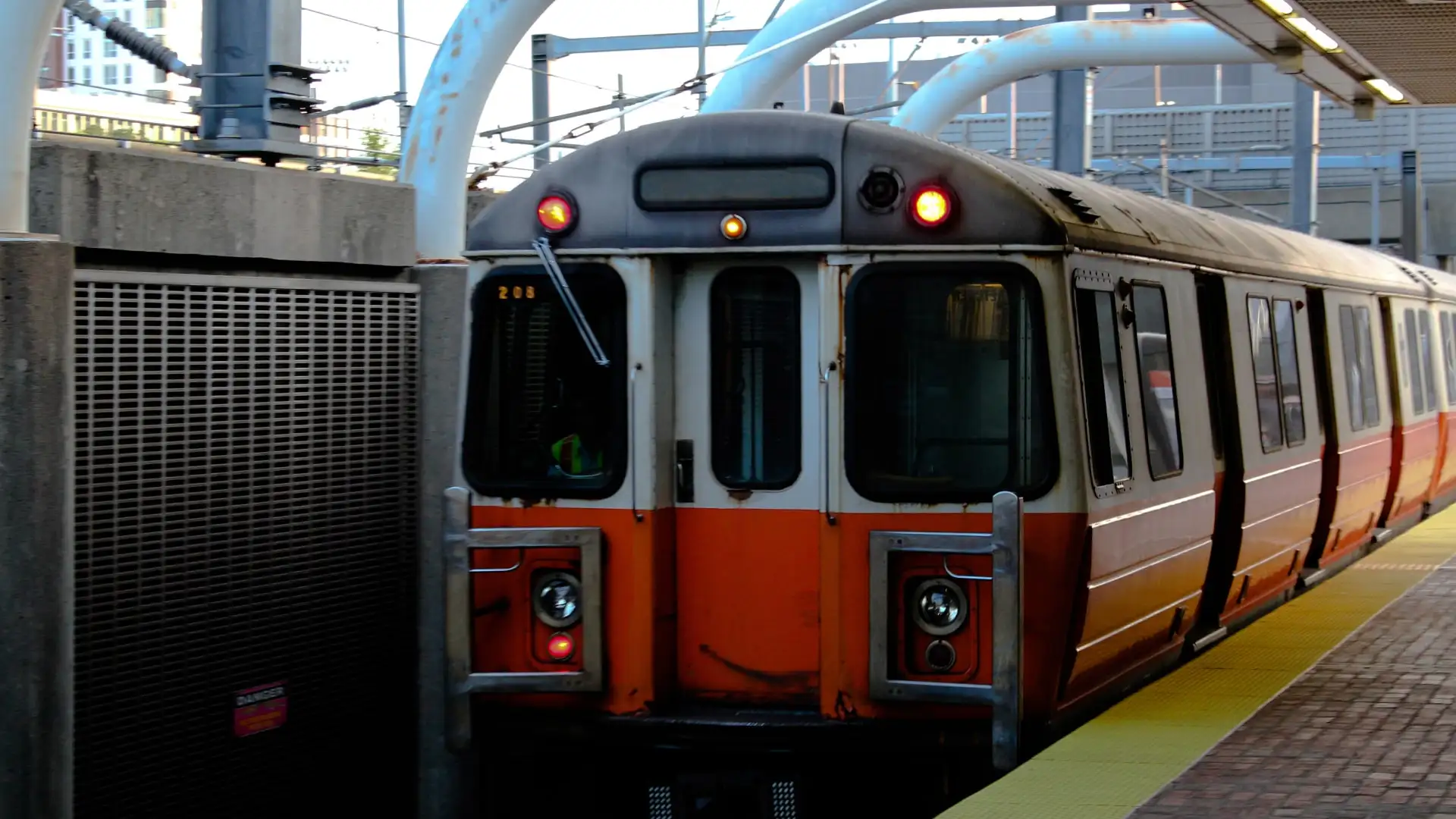
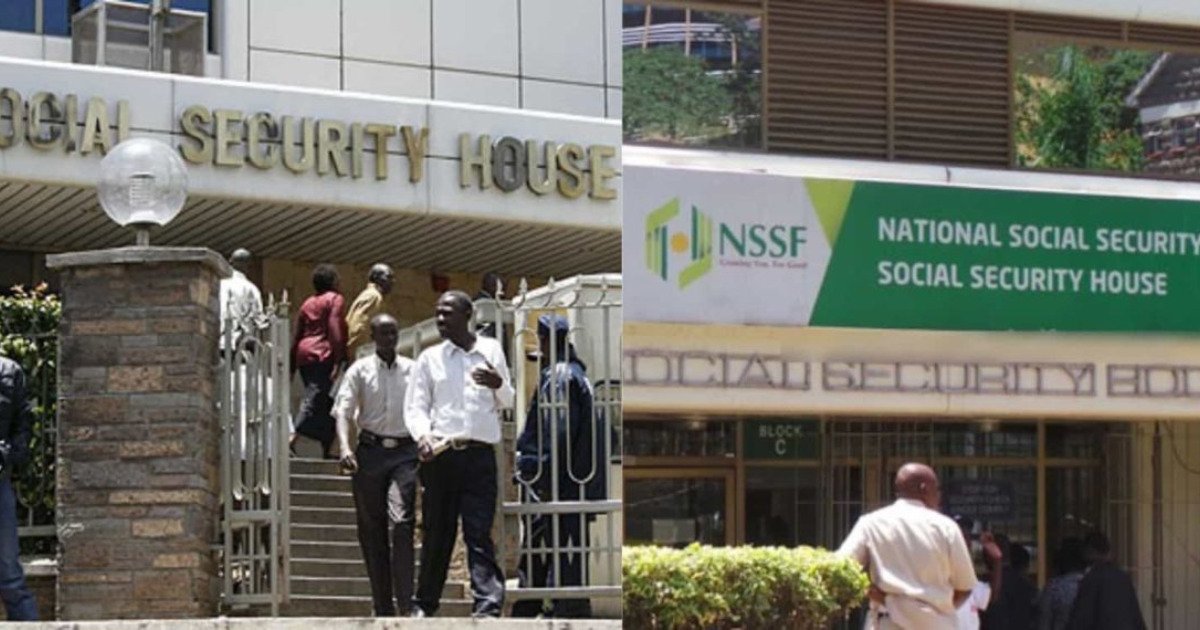

![[Resource]: Installing Webuzo on Your Nestict Cloud VPS: A Detailed Guide](https://www.blog.nestict.com/wp-content/uploads/2024/12/image.webp)
![[Resource] : Comprehensive List of Equity Bank Codes Across Kenya by Region](https://www.blog.nestict.com/wp-content/uploads/2024/12/image-5.png)



![[Continuation]: Current Challenges in Making Physics and Geography Compulsory](https://www.blog.nestict.com/wp-content/uploads/2024/12/The-universe-of-mathematics-physic-and-astronomy-its-ama…-Flickr.jpg)
![[Resource] : Why Physics and Geography Should Be Compulsory Like Mathematics in Education](https://www.blog.nestict.com/wp-content/uploads/2024/12/image.png)


![[LINKTREE] 2024 PAST PAPERS , NOTES ,RESOURCE,REVISION,EXAMINATIONS](https://www.blog.nestict.com/wp-content/uploads/2024/10/SCHM.jpeg)


![Maritime Terms, Abbreviations and Acronyms [Shipping Terms – Searchable]](https://www.blog.nestict.com/wp-content/uploads/2024/09/Container-Stowage-Stock-Illustrations-–-71-Container-Stowage-Stock-Illustrations-Vectors-Clipart-Dreamstime.jpg)








![[Explainer]: NVMe storage, SSD (SATA SSD), and HDD](https://www.blog.nestict.com/wp-content/uploads/2024/08/Laptops-are-available-with-SSDs-and-HDDs.png)
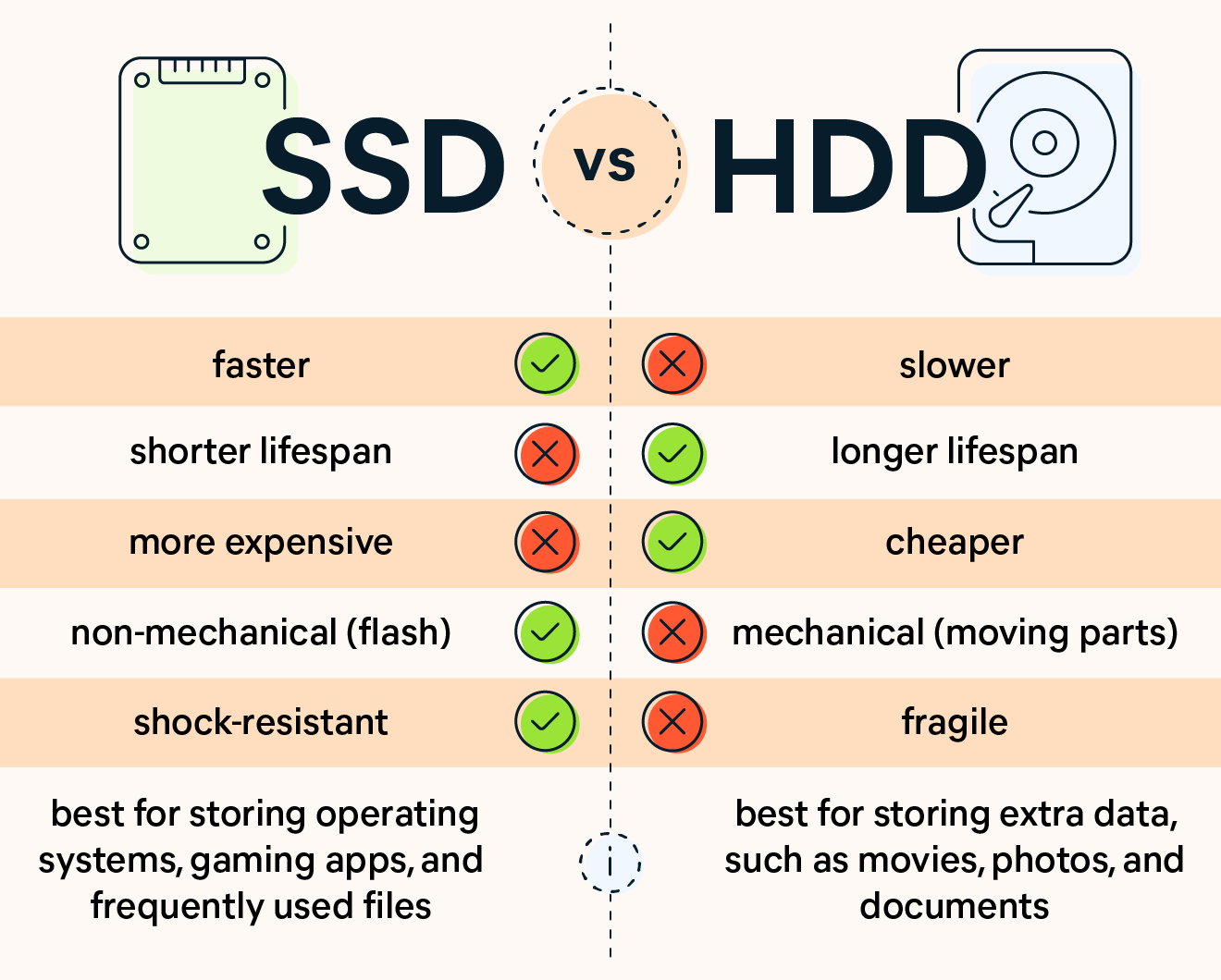
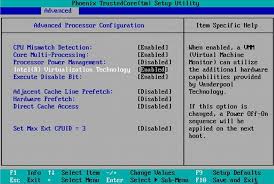












![[Updated 2024] – Passport Application FOR CHILDREN ONLY(PERSONS UNDER 18 YEARS)](https://www.blog.nestict.com/wp-content/uploads/2023/09/keppp-240x172.png)
![[Updated 2024] -Passport Application FOR ADULTS ONLY-PERSONS OVER 18 YEARS](https://www.blog.nestict.com/wp-content/uploads/2023/09/EAF-Passport-e1631045054464-400x800-1-240x172.jpg)

